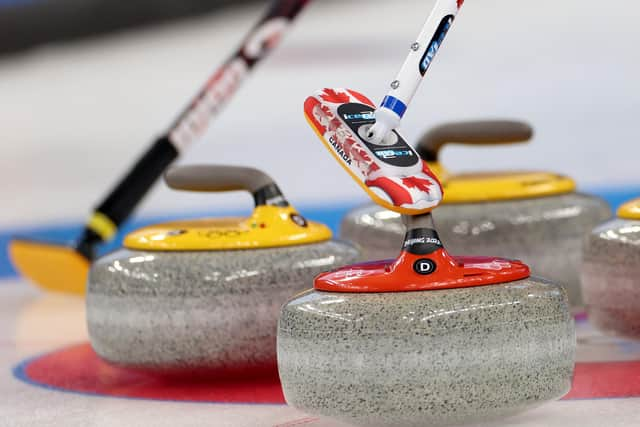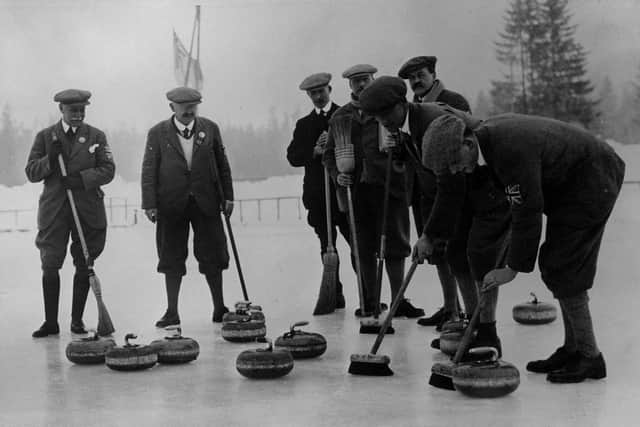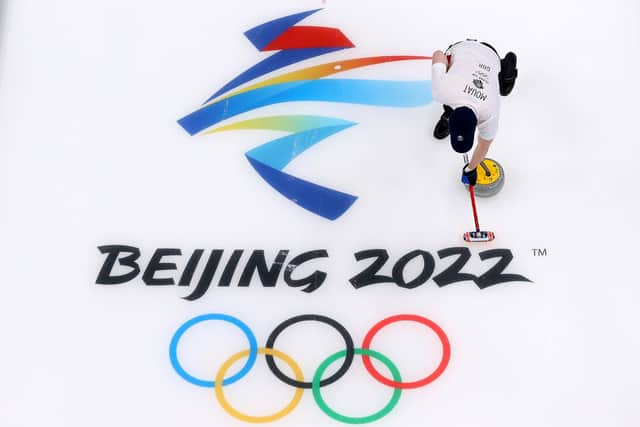Where are curling stones made? Why curling stones have lights and Scottish roots of curling stones at Beijing 2022
While Team GB’s medal-winning hopes in the mixed curling doubles were dashed for Jennifer Dodds and Bruce Mouat on Tuesday morning at the Winter Olympics 2022, there is still plenty of curling action to come at the Beijing games over the next two weeks.
The popular winter sport sees a large, round and flat stone pushed across the ice, with curlers using brooms to brush the ice ahead of the curling stone in order to ensure its speed and direction leads it to a circular target.


Advertisement
Hide AdAdvertisement
Hide AdAnd much like the sport itself, curling stones have strong ties with Scotland.
Here’s where curling stones are made in Scotland, what they are made of, how much they weigh and why you’ll see lights on curling stones during curling events at the Beijing 2022 Winter Olympics.
Where are curling stones made?
Curling stones have been created at Kays Curling in Mauchline, Ayrshire, on the west coast of Scotland since the mid-19th century.


The Ayrshire curling stone makers have been supplying the Winter Olympics since the first winter series of the international sports championship was held in Charmonix, France in 1924.
This is due to the fact that Kays Curling hold exclusive rights to the Blue Hone and Common Green granite found on the ‘Paddy’s Milestone’ island of Ailsa Craig, located halfway between Glasgow and Belfast in the Firth of Clyde.
While curling stones have changed in shape, size and consistency over time – with Stirling Smith Art Gallery and Museum hosting the world’s oldest curling stone dating back to 1511 – those used in the curling world championships and Olympic Games have strict requirements which are singularly met by Kays.


What are curling stones made of?
While curling stones have no set weight requirement, the round flat stones must weigh no less than 17.24kilograms and no more than 19.96kg in order to meet official curling rules.
This is why they are composed of granite, with the curling stones created for the Beijing Winter Olympics and every Winter games ever are mostly composed of Common Green granite and the Blue Hone granite found on Ailsa Craig.
Advertisement
Hide AdAdvertisement
Hide AdDue to Blue Hone granite being both hard and densely grained, it is less absorbent of water and thus more immune to erosion from freezing water or surfaces, as well as from chipping.
It is used for the bottom ‘running surface’ of curling stones by Kays to ensure that they can smoothly travel across the ice to the target without any potential erosion or chipping.
The rest of the curling stone’s body, known as the ‘striking surface' requires a tougher granite which can withstand the impact of being thrown or pushed across the ice.
The use of common green granite thus provides a barrier against any potential pits or weaknesses emerging in the stone which could risk weakening its performance due to impact absorption.
Why do curling stones have lights on them?
While watching curling coverage at this year’s Winter Olympics, such as when former Scottish curling world champion and Team GB’s Beijing 2022 flagbearer Eve Muirhead takes to the ice for the women’s round robin event on Thursday, you might notice that curling stones also have lights on them.
Each stone carries a pair of green and red lights on each side of its handle which act as sensors, used to track whether athletes release the stone before it reaches the first red hog line.
A green light is assurance that curling stones have been released correctly and before reaching the first hog line, but a red light indicates an athlete has failed to release the stone at the correct time.
Muirhead herself fell victim to the tracking system at the PyeongChang Winter Olympics in 2018, when an alleged hog violation on Muirhead’s part saw Sweden take the lead over Team GB’s women’s curling team.
A message from the Editor:
Thank you for reading this article. We're more reliant on your support than ever as the shift in consumer habits brought about by coronavirus impacts our advertisers.
If you haven't already, please consider supporting our trusted, fact-checked journalism by taking out a digital subscription.
Comments
Want to join the conversation? Please or to comment on this article.

